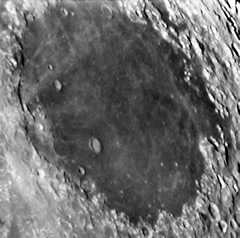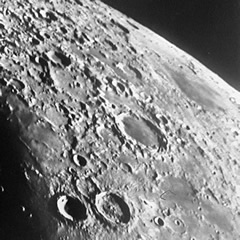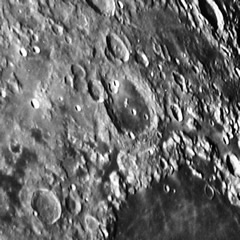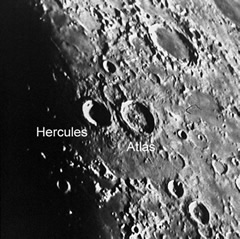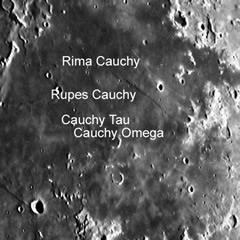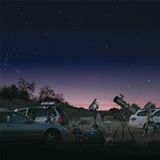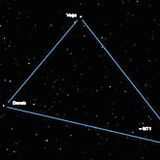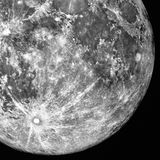
This weekend the Moon is still young, early in its new phase. While many people look for the first quarter moon to do their lunar observing, this is a great time to study other "less traveled" geographic features of Earth's closest neighbor. There will be many craters, rilles and seas in perfect contrast on this weekend's young Moon - some of them even visible through binoculars. Here are six easy-to-locate features and what you'll need to see them. If you're up for it, get out a pad of paper, some soft pencils, and try drawing a few of these. Drawing at the eyepiece is truly the best way to hone one's observing skills - you will literally see more!
Friday August 9
Mare Crisium is the most prominent sea on the Moon that you will notice tonight, covering an area of 375 miles by 345 miles. It is very circular and has a dark floor, flooded by lava during impacts on the Moon's surface. Notice as well the fine wrinkle-ridges and lots of craterlets. Obvious on the floor is the crater Pickard, 14 miles wide and over a mile deep. A 10x binocular is great for this feature, although you certainly will be able to note this Mare with the unaided eye.
Endymion is a crater containing steep outer slopes and very high inner walls, especially to the southeast. This too is a 10x binocular target, and will certainly make a beautiful sight in a telescope with its walls greatly detailed with razor-sharp shadows.
Cleomedes and Rima Cleomedes are excellent features close to tonight's terminator, or the line of contrast between light and shadow. Cleomedes is a walled plain easy to enjoy with 50mm of aperture. Its slopes have numerous craterlets, and its floor contains Rima Cleomedes and a small mountain. A 10x binocular will show these features. Rima Cleomedes will require a 200mm scope, but this will reveal a 36 mile long Y shaped feature crossing the crater's floor.
Saturday August 10
The crater Atlas and the Y shaped rilles inside it, called Rima Atlas, is a particularly interesting sight. The floor of Atlas is rough, and contains a central mountain and some craterlets. You can see all this with a 50mm telescope. To see Rima Atlas, a 200mm telescope is recommended.
Hercules is the close neighbor of Atlas, forming an outstanding pair. Hercules has very steep slopes, with the crater Hercules D to its southeast. The inner walls have remarkable terraces, and note the stained sinks on its floor, caused by darker lava. A 50mm instrument will get you there.
Cauchy Tau, Cauchy Omega, Rupes Cauchy and Rima Cauchy are all associated with volcanism. Cauchy Omega is a volcanic dome, with a crater on top. To its south is another dome, Cauchy Tau, which is crater-less. Rupes Cauchy is a fault line running south-east to north-west, while Rima Cauchy is a short rille in the form of an 'S.' Plenty to see, even a bit of challenge in this section identifying the numerous features. 100mm for the domes, 200mm for the finer targets.
Mark Wagner is a life-long astronomy enthusiast and deep sky observer. He has spent the past twenty years popularizing amateur astronomy in the San Francisco bay area through his writing and community building. A past president of the San Jose Astronomical Association, he founded what is now the annual Golden State Star Party in California. Please post if you have comments, questions, sketches or images you've taken of the targets mentioned above.




